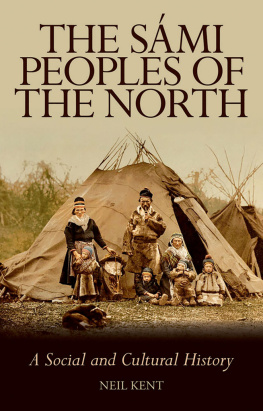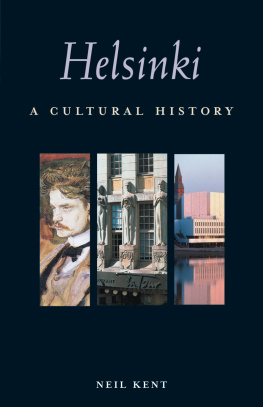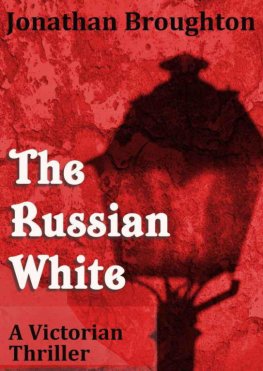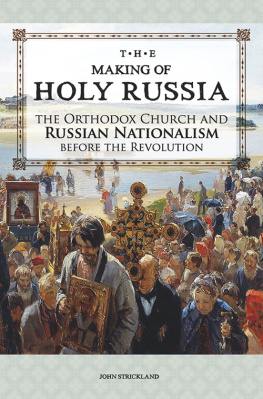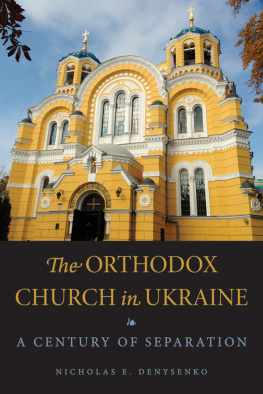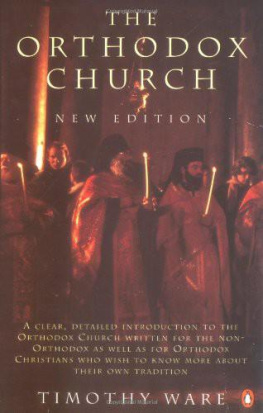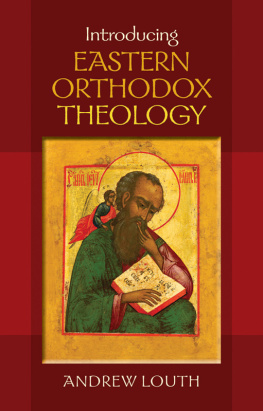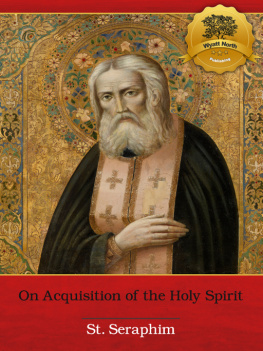Contents
List of Figures
Guide
Pagebreaks of the Print Version
A Concise History of the Russian Orthodox Church
Neil Kent
Academica PressWashington ~ London
Library of Congress Cataloging-in-Publication Data
Names: Kent, Neil (author)
Title: A concise history of the russian orthodox church | Neil Kent
Description: Washington: Academica Press, 2022. | Includes references.
Identifiers: LCCN 2020056523 | ISBN 9781680539059 (hardcover) | 9781680539066 (paperback) | 9781680539073 (e-book)
Copyright 2022 Neil Kent
Contents
Illustrations A Concise History of the Russian Orthodox Church
Chapter 1 Introduction
All Christian Churches trace their origins to the life of Jesus Christ, and His Death and Resurrection, over two thousand years ago. For adherents of Christianity, these are the central events in the history and salvation of mankind.
Yet over the millennia, Christians have separated themselves from each other, not only by virtue of the political, cultural, and social diversities that distinguish them, but with differences of dogma, doctrine, and religious customs that developed over this long period. Already in the early centuries of the first millennium AD, the Church in the Eastern regions of the Roman Empire had developed characteristics that defines it to this today, in distinction to the Latin tradition that characterized the Empires Western regions until the outbreak of the Protestant Reformation in the early sixteenth century. This latter, on-going event, which took centuries rather than decades to complete, destroyed the hegemony of the Roman Catholic Church in Western and Northern Europe and elsewhere in the Christian world. In its wake, Protestant religions, such as Lutheranism, Calvinism, Anglicanism, and the evangelical Baptist, Methodist, and other free church movements have strongly defined Christianity in the West. Yet in the modern world, they have all retreated before the onslaught of secularism, atheism, and agnosticism.
In the East, by contrast, Orthodoxy, has long since been the principal Christian faith, despite threats to its existence from Arab, Mongol, and Turkish conquests; attacks from Poland-Lithuania, Sweden, and Germany; and rule by militant atheistic communism. Now, in contrast to the atrophying practice of Christianity in the West, Orthodox Christianity in the East, especially in Russia, Belarus, Ukraine, Romania, Moldova, Bulgaria, Georgia, and parts of the former Yugoslavia, has experienced an extraordinary post-communist revival. The Russian Orthodox Church under the Patriarch of Moscow, the subject of this book, has risen like a phoenix from the ashes to which it had been reduced by the Soviet regime in the wake of the Russian Revolution of 1917.
Establishment of Christianity in the Roman Empire
Throughout the first three centuries of Christianity, adherents of the faith suffered persecutions at the hands of Roman emperors and within the communities in which they lived. It was only in the early fourth century that their situation changed dramatically. In 312 AD, Emperor Constantine ceased persecuting Christianity and soon established it as the state religion of the Roman Empire, supplanting various forms of paganism that had characterized the empire and the republic before it.
Yet already by this time, factions were undermining the unity of the Church. In 325 AD, Constantine convoked an episcopal council of some 318 bishops, the heirs to the Apostles, who oversaw the rites and beliefs of the Church, as well as the priests who performed its sacraments. This was the Council of Nicea, then a Greek-speaking city in northwestern Anatolia, in what is today Turkey. The Nicene Creed, which emerged from the council, has ever since been the central expression of belief of virtually all Christians, namely its explication of the Trinity the core belief for comprehending the mystery of the unity of God, in three persons, the Father, the Son, and the Holy Ghost.
Nicea was one of a number of early Church councils informing the dogmas, doctrines, and canons that still serve as the foundation blocks of all Christian churches to this day. Along with later ones, it also helped to define, often in open conflict, the relationship between Church and State.
According to the synoptic gospels of the Bible, Jesus had said: Render unto Caesar the things that are Caesars, and unto God the things that are Gods. In line with this, and as formulated by the Emperor Constantine, the relationship was perceived as one of harmony and complementarity. Constantine spoke of a symphony between the two, which, although it later occasionally broke down, would be reconfirmed in the ninth century, in the reign of Emperor Basil I (867886 AD). In the reality of a world in which might frequently triumphs over right, however, the relationship functioned most smoothly when the authority of the emperor, representing the state, was accepted and the patriarch, the first amongst the bishops of the church, submitted to his will. When this did not happen, great upheavals could result, both theological and political. This state of affairs was to characterize not only the ancient Church of Byzantium, but that of Russia a millennium later as well, especially under Tsars Ivan IV (15331584) and Peter I (16821725 the Terrible and the Great, respectively and during the Soviet period in the twentieth century (19171991). In those dark times, torture, imprisonment, and death could await clerics unwilling to accept the heretical beliefs or un-Christian actions of state authorities who rebelled against Orthodox belief and morality.
The Cathedral of the Holy Wisdom or Hagia Sophia
From the fourth century AD until the conquest of the Byzantine Empire by the Turks, the Cathedral of the Holy Wisdom or Hagia Sophia, in Greek, was and in some respects, still is the greatest of all Orthodox Churches, the Mother Church of the Byzantine Empire. Moreover, it has for centuries been the symbol for the faithful dreaming about an Orthodox Revival in Constantinople, todays Istanbul, in what is now an overwhelmingly Muslim Turkey.
This most famous and venerable of all Orthodox churches was built by order of the Emperor Justinian I (the Lawgiver) in 532537. It is a vast and imposing stone edifice, with joints of brick and mortar, including elements of sand and ceramics. Its central feature is its nave, crowned by a vaulted central dome, in turn surrounded by smaller ancillary domes, richly decorated with icons. It served as the seat of eastern Christianity from the time of its completion until the fall of the Byzantine Empire to the Ottoman Turks in 1453. It was then turned into a mosque, with minarets added and its frescoed icons covered up. From 1935 to 2021, however, it was a museum, perhaps the most visited in Turkey, not only by secular tourists but by faithful adherents of Orthodoxy, especially those from Russia and Ukraine. All that, however, is set to change, since this mother of all Orthodox cathedrals has just been returned to use as a mosque by order of the Turkish government.
Early Church Fathers
Many threats to Orthodoxy over its long history were external to the Church but some came from within. Great spiritual leaders of the early Church did their best to safeguard the Eastern Churchs teachings when confronted by the onslaughts of perceived heresy emanating from within the wider Christian community. Thus, Saint Basil the Great (330379 AD) fortified the Church in its fight against the Arian heresy, which rejected a belief in the Trinity and saw Christ as subordinate to God the Father and created by Him in time. Another was the great theologian Saint Gregory of Nazianzus (c. 329390 AD), Archbishop of Constantinople, who played a leading role in formulating the concept of the Trinity at the Council of Nicaea. Saint Gregory of Nyssa (c. 335-c. 394 AD) was also highly important for his theological contributions, not least for his theology of the Holy Trinity and his focus on the possibility of universal salvation. He was followed by Saint John Chrysostom (c. 347407), another Archbishop of Constantinople, an ascetic figure who denounced vice wherever he saw it, even in imperial circles, and was the greatest preacher of his age.


